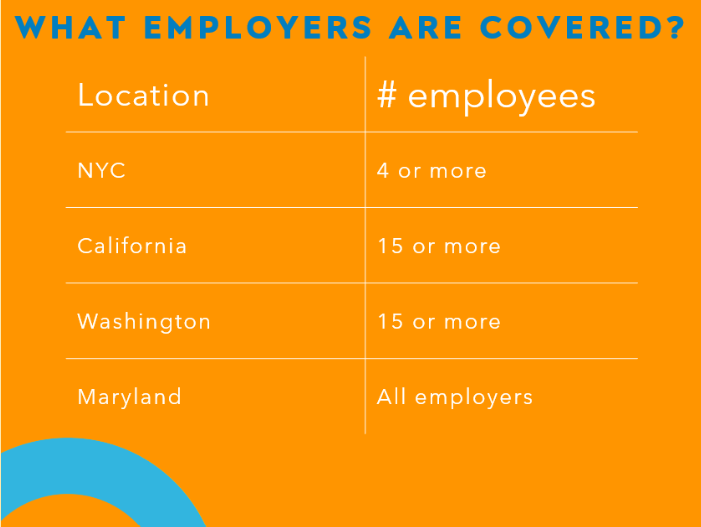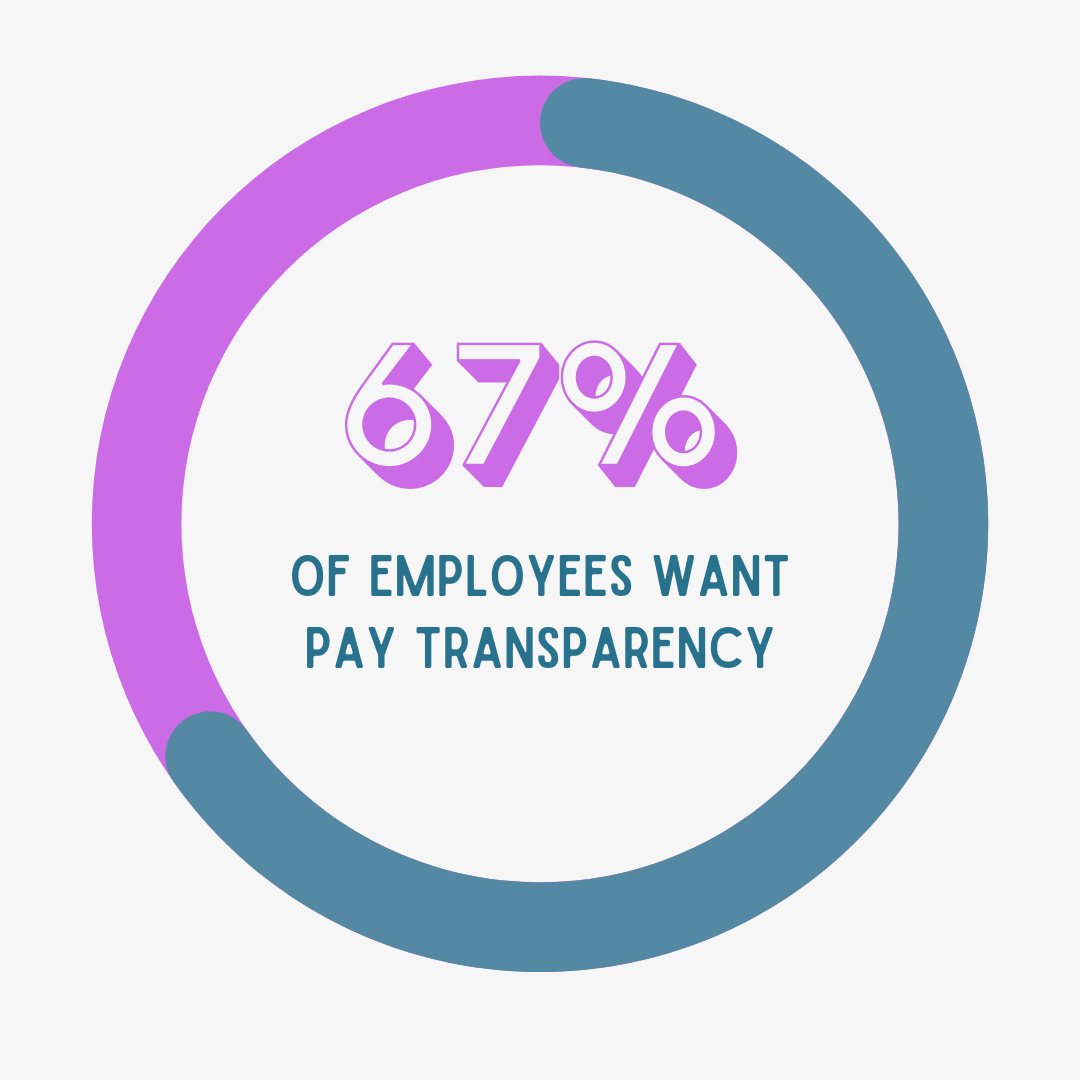Pay Equity and Pay Transparency Guide for Multi-State Employers
Learn how to create compliant equal pay and pay transparency policies across state lines
by Susan Snipes, GPHR, SPHR, MS HRM - January 18th, 2023
For the past decade, I’ve watched employers grapple with the concepts of pay equity and pay transparency. In many organizations, there have been certain “trusted employees” who were allowed to see what other employees made.
Download the 2023 HR Compliance Calendar
These were often people in HR or Finance or were company Executives. In some cases, even HR was not allowed to look behind the curtain to view Senior Management’s salary and bonus info. Some companies went as far as paying certain key employees out of a completely separate entity just to keep those numbers “top secret”.
These old-school (and often unlawful) practices are being replaced with practices that invite, not extinguish or deter pay equity conversations. You may have noticed that your target college for recruiting interns requires information about your company’s pay equity and transparency policies to post jobs on their job boards.
Or perhaps a customer has even asked you about these policies as part of their RFP process. More and more, it’s becoming clear that equal pay is here to stay. This guide is designed to help you get past the buzzwords and gain a practical understanding of how to design equal pay and pay transparency policies and practices that comply with federal and multi-state requirements. Check out our compliance guide to learn more about HR compliance issues.
What Are Pay Transparency and Pay Equity?
Pay transparency is the practice of employers making pay information, including base wage, bonuses, commission structures, pay increases, and other total compensation elements accessible to existing and prospective employees. Pay transparency supports pay equity by holding employers accountable for providing equal pay for equal work. For example, pay equity would be two auto mechanics performing the same job at the same level and receiving the same hourly wage. Pay transparency would be advertising that job at the same pay rate or range that was offered and paid to the two mechanics. A policy of equal pay for equal work protects women, people of color and other largely underpaid populations from wage discrimination. A policy of pay transparency reinforces the policy of pay equity and gives employees confidence that they are being paid fairly.
Why Do Employers Struggle to Provide Pay Transparency and Equal Pay?
In theory, if employers’ pay structures are fair and above board, then sharing them with applicants and employees should not pose a problem…right? You’d think so, but the reality is that pay transparency and pay equity just aren’t happening at the levels they should. According to a survey conducted by Lattice, 85% of HR teams reported needing to improve pay transparency at their organizations, and only 25% of employees knew the pay band for their particular job level. One possible reason for this is: Some pay structures aren’t straightforward. Many salary decisions are based on individual skill levels, experiences and education. There are also certain intangibles noted by hiring managers, such as “culture fit”, “team fit” or “personality” that we HR professionals constantly try to convert to more objective criteria to avoid the appearance of discrimination. Employers also face concerns about releasing pay strategies to competitors who might use the information to their advantage.
Why Should Employers Care About Transparent, Equal Pay?
It’s the Law!
In addition to the Federal laws providing for equal pay for equal work and the freedom of employees to discuss their wages with other employees, several states already have pay equity and pay transparency laws on the books. In fact, every US state has its own equal pay laws in effect. This includes Mississippi, which was the final holdout (Signed into law on April 21, 2022). The most significant differentiator between these state pay equity laws is how they
The following states also have one or more equal pay laws:
Washington
Oregon
California
Nevada
Colorado
Nebraska
Louisiana
Illinois
Minnesota
Maryland
Delaware
New Jersey
New York
Connecticut
Massachusetts
New Hampshire
Road Island
Vermont
Maine
Not all of the above work locations’ laws offer protections to employees or require the same actions from employers. And, to complicate things even further, several localities also have pay transparency laws. For example, New York City and Westchester County have their own laws that are similar to the laws of Washington (effective January 1, 2023) and Colorado in that they require employers to display the pay range for any open position or job promotion or transfer opportunity on any external or internal job advertisements.
Work locations that require pay rate or range disclosure to applicants and/or employees include:
California – effective Jan. 1, 2023
Colorado – effective Jan. 1, 2021
Connecticut – effective Oct. 1, 2021
Maryland – effective Oct. 1, 2020
Nevada – effective Oct. 1, 2021
Jersey City, NJ – effective April 13, 2022
Ithaca, NY – effective Sept. 1, 2022
New York City – effective Nov. 1, 2022
Westchester County, NY – effective Nov. 6, 2022
Cincinnati, OH – effective March 13, 2020
Toledo, OH – effective June 25, 2020
Rhode Island – effective Jan. 1, 2023
Washington – effective Jan. 1, 2023
Other work locations that have recently considered this type of legislation:
Massachusetts
South Carolina
Tennessee
Washington, D.C.
Areas Where State and Local Pay Equity and Transparency Laws Differ
The number of employees an employer must have to be subject to the requirements

Examples of “covered employer” by number of employees
Types of Job Listings Covered
Example: Colorado- advertisement for a job, promotion, or transfer opportunity
Pay range or pay rate AND all benefits, bonuses, commissions, etc.
Employee Rights and Protections
(e.g. protection against adverse employment actions for employee complaints about pay)
Whether Or Not Employers Can Ask About Salary History In the Hiring Process
According to Salary.com, there are “17 state-wide salary history bans (including the commonwealth of Puerto Rico), 17 local bans, 2 laws prohibiting bans, and 1 legal challenge to a ban in the United States.”
What Must Be Included In a Job Listing
(e.g. a minimum and a maximum salary).
Penalties for employer violations
(e.g. New York City: civil penalties of up to $250,000 for a first offense, etc.)
Whether or not annual pay data reports need to be filed with the city, county, or state
Salary transparency recordkeeping requirements
(e.g. Colorado: a record of job titles and wage history during each employee’s employment and for two years after termination)
Due to the various, ever-changing state and local laws, the total rewards association WorldatWork recommends that employers adopt a national approach to pay transparency. You’ll want to consider the massive administrative burden of only offering pay transparency to employees in work locations that require it.
I’m sure you’ll agree that it’s hardly worth the backend backflips to administer partial pay transparency. Ultimately, employees cannot be discriminated against or retaliated against for discussing their wages under the National Labor Relations Act. Your team can see what employees in NYC, California, and Colorado are making and ask you about their own compensation and why it’s significantly less or more.
I had one colleague in the Art Museum Industry share with me that she had team members who banded together to create an interactive online Google Sheet that shared their pay with their coworkers. Museum workers found out that some of them were being grossly underpaid relative to their colleagues in the same positions. Since this was considered a protected activity, there was nothing the employers could do to stop it.

Pay Transparency Helps With Employee Recruitment and Retention
Neuroscience explains how employees need fairness and certainty to feel happy and secure in their jobs. Transparent management practices such as pay transparency and equity are embraced by employees because they increase perceived fairness and certainty. Employees also want to understand your company’s pay practices, how pay decisions are made and what those practices mean for their long-term professional development. 67 percent of employees surveyed by Lattice want greater pay transparency and equity from their employers. Forbes reported similar findings and also emphasized the importance of transparency and equity in professional development opportunities.

I can tell you from experience that your team wants a career roadmap with skills requirements and pay band information. And we know from GoCo’s State of HR 2023 Report that base compensation remains the number one determining factor in which employees leave or stay with your organization. This makes employee visibility into how they can increase their base pay through professional development and career progression extremely important for employee retention. It’s also a major selling point for prospective employees.
Employers benefit from pay transparency in the hiring process as well. I’ve found that employers waste less time on poor-fit candidates in the hiring process when they openly advertise the pay rate for the position and mention it in the application and screening process. There is nothing quite as frustrating as sending a candidate through multiple rounds of interviews only to have the applicant withdraw because the pay offered did not meet their expectations (It blows my mind how often this happens).
The Gender and Race Wage Gaps Are Still Major Issues
If it feels like you’ve heard the phrase “Women make 70 cents for every dollar men make” for the past decade, it's because you have. And despite years of sporadic news coverage, articles, Memes, GIFs, and social media shares, women STILL receive significantly lower earnings than men for the same types of work. The disparity is more or less pronounced depending on factors like people’s industry and race. For example, the US Census Bureau reported the median earnings of all women in Sales in 2020 to be 69% of what men in the same industry made. For the same industry, Black women’s median earnings were only 47% of what white males earned.
Pay Equity and Transparency Best Practices
All pay equity and transparency policies are not created equal. To maximize the ROI of your organization’s pay equity and transparency policy, you’ll need to lay the groundwork.
Audit Existing Practices
Before you shout your pay equity and transparency policy from the rooftops, conduct a friendly audit to ensure that there are no existing pay equity issues.
Run a report in your HR System that includes (at minimum) all active employees’ names, job titles, hire dates, base wage, OTE, gender, age, race, ethnicity, disability status, veteran status, education level, skills, certifications and experience level/years of job-related experience. HR Systems that are able to aggregate data from multiple sources by integrating with multiple apps are hugely helpful for this kind of project.
Make sure that any differences in pay for people performing the same work are based on legally acceptable criteria. In most states (but not all!) criteria such as demonstrable skill level, years of job-related experience or years of service with the company count as legitimate reasons for pay differences.
Ensure that your policy complies with the laws of all states and localities in which you intend to hire employees or currently employ people. This includes not retaliating against (i.e. disciplining, demoting, docking pay, etc.) employees for complaining about their pay.
Design and Manage Your Pay Policy
You can set your organization up for success with a pay equity and transparency policy that is:
Well communicated
Document and distribute your policy in your employee handbook, on your company intranet, etc.
Announce and promote the policy at an all-hands meeting.
Include information on the policy in your company newsletter.
Add wording on your policy to your EEO statement on your job advertisements.
Make sure that all hiring managers and supervisors are trained on the policy.
Review the policy with all new hires
Review the policy with existing employees during pay reviews.
Clearly demonstrated
Create a career roadmap that shows possible technical and management tracks with the required skills (and, if applicable, experience and education) needed to achieve the next level of pay.
Publish your career roadmap internally, and make sure employees know where it is and how to access it.
Make sure all job advertisements both internally and externally are posted with the established pay rate or range.
Increase employees’ pay timely, on an established schedule once
Regularly reinforced
Require refresher training on the policy for hiring managers and supervisors every 1 to 2 years. (It may make sense to include this policy in an existing training on diversity, equity, and inclusion).
Consistently apply appropriate sanctions for any policy violations.
Remind employees of the company’s commitment to pay equity and transparency at least once a year. This could be via an all-hands meeting, at a company event, via social media, or company newsletter, for example.
Conduct annual pay equity audits and adjust compensation accordingly.
Stay up-to-date on employer requirements via continuing education.
With the right pay policies, practices, and structures in place, your organization can engage and retain valued employees, while reducing liability. So keep an open door, an open mind, and an open tab for updating that compensation spreadsheet!
Recommended Posts
Search...
Product
GoCo
Resources
Articles
eBooks
Webinars
Customer Stories



